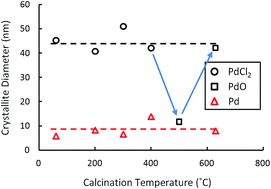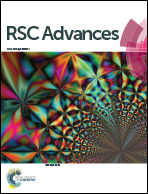Redox structural control of Pd and PdO silica matrices
Abstract
This work shows that superior structural control can be conferred by reducing palladium derived silica structures at room temperature instead of oxidizing at high temperatures. A PdCl2 precursor was incorporated into silica matrices via a silica sol–gel process. Xerogel samples were reduced very quickly at room temperature, as PdCl2 decomposed into Pd, thus forming a reduced PdSi xerogel. Under calcination conditions up to 630 °C, small Pd nanoparticles were formed where crystallite sizes remained constant at ∼11 nm. In contrast, in the case of the oxidised PdOSi, the larger crystallite sizes (∼45 nm) of PdCl2 decomposed into PdO for temperatures above 400 °C in air, also forming smaller crystallite sizes of ∼12 nm. However, the crystallite sizes increased by almost four-fold to ∼41 nm as the oxidation temperature was raised from 500 to 630 °C, thus suggesting PdO nanoparticle agglomeration, made possible by the voids left from the decomposition of the larger PdCl2. In the case of the reduced PdSi at room temperature, the uncondensed silica structure enveloped the small Pd nanoparticles and hindered metal Pd diffusion at high temperatures, thus delivering a narrower and smaller pore size distribution.



 Please wait while we load your content...
Please wait while we load your content...